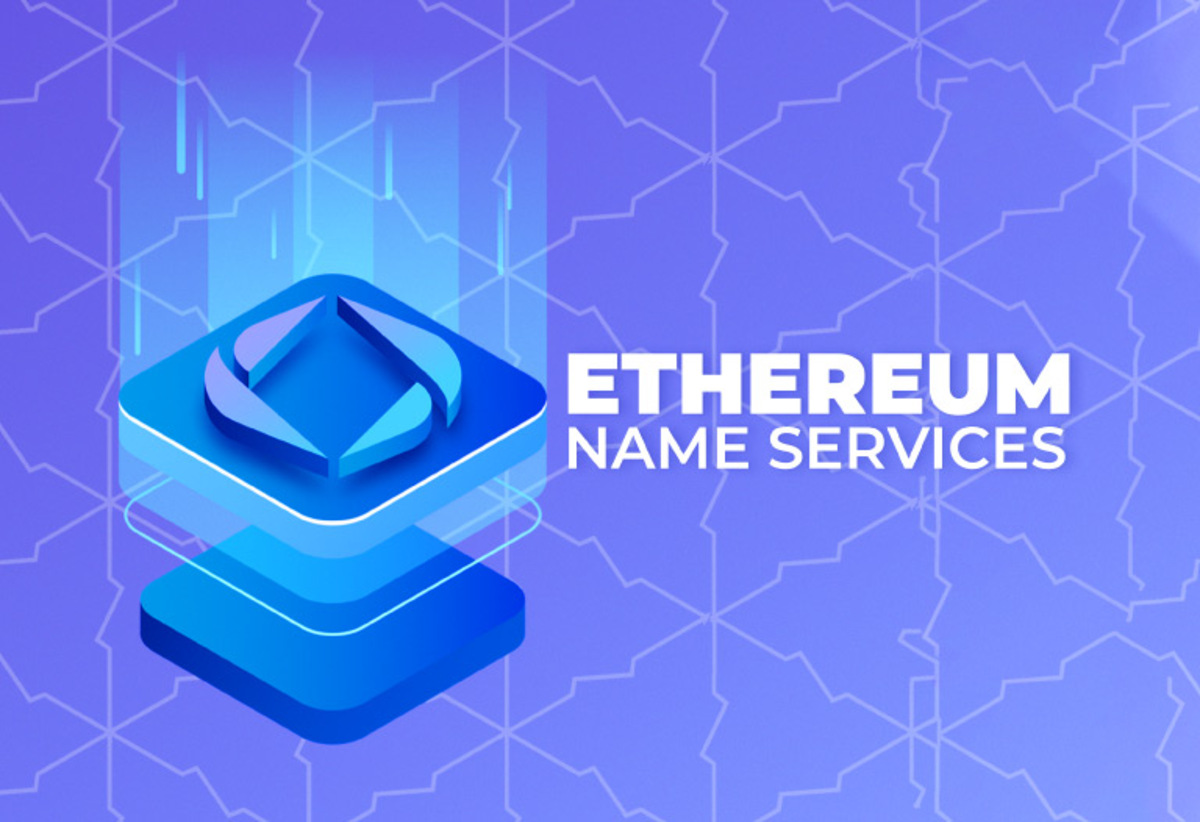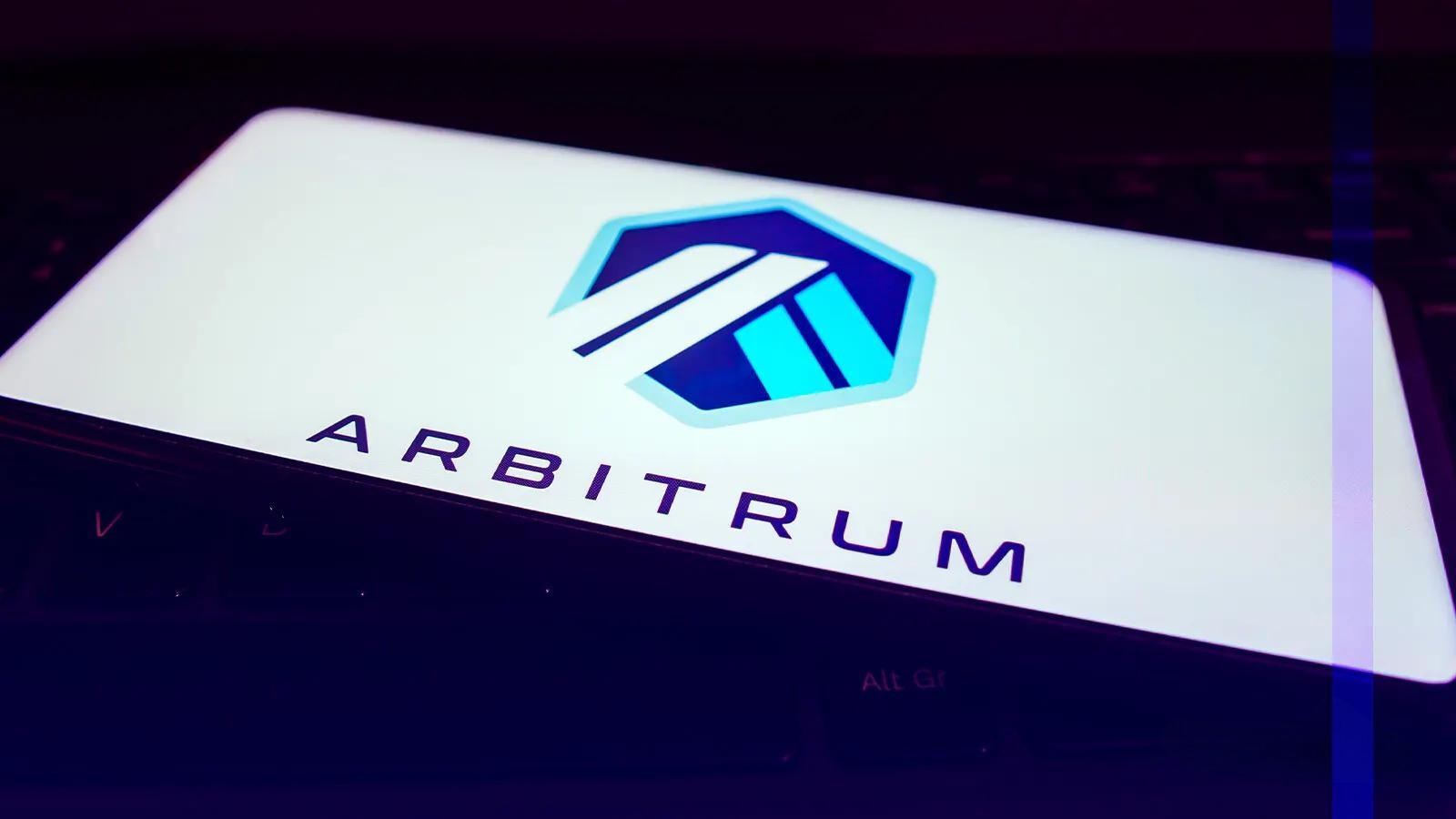Introduction
Welcome to the world of blockchain technology and smart contracts! As the popularity of cryptocurrencies continues to grow, so does the need for secure and efficient transactions. Smart contracts, built on blockchain platforms such as Ethereum, have emerged as a groundbreaking solution to streamline business processes and eliminate the need for intermediaries.
So, what exactly are smart contracts? Essentially, they are self-executing contracts with the terms of the agreement directly written into the code. These contracts automatically execute predefined actions once specific conditions are met, ensuring transparency, immutability, and trust.
In the vast ecosystem of blockchain networks, Ethereum stands out as one of the most prominent platforms. Ethereum allows developers to build and deploy smart contracts, revolutionizing industries such as finance, supply chain management, and even entertainment.
To interact with the Ethereum blockchain and manage smart contracts, users need an Ethereum wallet. An Ethereum wallet is a digital wallet that enables individuals to store, receive, and send Ether, the native cryptocurrency of the Ethereum network. It also provides a user-friendly interface to interact with smart contracts and perform various operations, including claiming rewards from smart contracts.
In this guide, we will walk you through the steps of claiming smart contracts in an Ethereum wallet. Whether you’re a newcomer or an experienced user, this guide will help you navigate the process smoothly and efficiently. So, let’s dive in and unlock the potential of smart contracts in your Ethereum wallet!
What are Smart Contracts?
Smart contracts are self-executing contracts with the terms of the agreement directly written into code. They are designed to automate and enforce the negotiation or performance of an agreement, eliminating the need for intermediaries, such as lawyers or banks.
Behind the scenes, smart contracts are built on blockchain technology, which ensures transparency and immutability. Blockchain is a decentralized and distributed ledger that records and verifies transactions across multiple computers, providing security and eliminating the risk of single-point failures.
Smart contracts operate on a “if-then” basis, meaning that once the predetermined conditions are met, the contract is automatically executed. For example, if a certain amount of cryptocurrency is transferred to a specific address, the smart contract can trigger the release of digital assets, execute a payment, or update ownership records.
One of the key features of smart contracts is that they allow for trustless transactions. Participants do not need to rely on a third party to ensure the integrity of the agreement. Instead, the terms are encoded in the contract and are executed automatically, without the possibility of tampering or manipulation.
The applications of smart contracts are virtually limitless. They can be used for financial services, supply chain management, legal agreements, decentralized applications (DApps), and much more. Smart contracts have the potential to streamline processes, reduce costs, and increase efficiency in various industries.
It is important to note that while smart contracts are powerful tools, they are only as reliable as the code they are written in. In the event of a coding error or vulnerability, it can have serious consequences. Therefore, careful consideration and thorough testing are crucial when developing and deploying smart contracts.
Overall, smart contracts are a disruptive force in the world of business and commerce. By automating agreements and eliminating the need for intermediaries, they provide a secure and efficient way to transact and interact in the digital landscape.
What is Ethereum Wallet?
An Ethereum wallet is a digital wallet that allows users to securely store, manage, and interact with their Ethereum-based assets, including Ether (ETH) and other tokens. It serves as a gateway to the Ethereum blockchain, providing a user-friendly interface to access, send, and receive digital currencies.
There are several types of Ethereum wallets available, catering to different preferences and needs. These include web wallets, desktop wallets, mobile wallets, and hardware wallets.
A web wallet is accessed through a web browser and is often provided by a third-party service. It offers convenience and ease of use, as users can access their wallet from any device with an internet connection. However, web wallets may introduce certain security risks, as they rely on the security measures implemented by the service provider.
Desktop wallets are applications that can be downloaded and installed on a personal computer. They offer more control and security compared to web wallets, as the user’s private keys are stored locally on their device. Desktop wallets are a popular choice for those who prioritize security and prefer to have their wallet information stored offline.
Mobile wallets are specifically designed for mobile devices, such as smartphones or tablets. They provide a convenient way to manage digital assets on the go. Mobile wallets may feature enhanced security measures, such as biometric authentication or hardware encryption, to ensure the safety of the user’s funds.
Hardware wallets are physical devices that store the user’s private keys offline. They offer the highest level of security, as the private keys are never exposed to the internet. Hardware wallets are generally immune to malware attacks and are considered one of the safest ways to store cryptocurrencies.
Once you have an Ethereum wallet set up, you can use it to interact with smart contracts. Smart contracts have their own unique addresses on the Ethereum blockchain, and users can send and receive digital assets to and from these addresses using their Ethereum wallet.
In addition to managing digital currencies, Ethereum wallets often provide features such as portfolio tracking, transaction history, and integration with decentralized applications (DApps). They offer a comprehensive solution for users to engage with the Ethereum ecosystem and take full advantage of the benefits of blockchain technology.
In the next section, we will guide you through the process of claiming smart contracts in your Ethereum wallet, unlocking the rewards and benefits associated with these contracts.
Steps to Claim Smart Contracts in Ethereum Wallet
If you have participated in a smart contract, such as a token sale or a decentralized finance (DeFi) protocol, you may be entitled to claim rewards or benefits from that contract. To claim these rewards, follow the steps outlined below:
Step 1: Open Ethereum Wallet
Launch your Ethereum wallet application on your chosen device. Make sure you have the latest version of the wallet software installed to ensure compatibility and security.
Step 2: Go to the Contracts Tab
Locate the “Contracts” tab or section within your Ethereum wallet. This may be located in the main navigation menu or within a specific submenu. Click on it to proceed.
Step 3: Select the Smart Contract to Claim
Within the Contracts section, look for the specific smart contract from which you want to claim rewards. This contract may be associated with a particular token or platform. Click on the contract to access its details.
Step 4: Find the “Claim” Function
Within the smart contract details, locate the “Claim” function. This is the function specifically designed to initiate the claiming process. It may have a distinctive button or tab associated with it.
Step 5: Enter the Necessary Details
Once you have found the “Claim” function, you may be required to enter certain details. These details can vary depending on the specific smart contract. Common information to provide may include your wallet address, the amount or type of rewards you wish to claim, and any additional parameters requested by the contract.
Step 6: Confirm the Transaction
After filling in the necessary details, review the transaction summary to ensure its accuracy. Confirm that you are comfortable with the gas fees associated with the transaction. Gas fees are the fees paid in Ether to perform the transaction on the Ethereum network. Once you are satisfied, confirm the transaction to initiate the claim process.
And that’s it! You have successfully claimed your rewards or benefits from the smart contract. The rewards should now be reflected in your Ethereum wallet’s balance or associated with your account.
Remember, the specific steps and terminology may vary depending on the Ethereum wallet you use and the smart contract you are interacting with. It is always recommended to familiarize yourself with the user interface and instructions provided by your wallet application.
By following these steps, you can take full advantage of the benefits and rewards offered by smart contracts in the Ethereum ecosystem.
Step 1: Open Ethereum Wallet
Before you can claim smart contracts in your Ethereum wallet, you need to ensure that you have an Ethereum wallet application installed and ready to use. Here’s a step-by-step guide on how to open your Ethereum wallet:
1. Download and Install
If you don’t already have an Ethereum wallet, you’ll need to download and install one. There are various wallet options available, including web wallets, desktop wallets, and mobile wallets. Choose the wallet type that suits your preferences and security requirements.
2. Launch the Wallet Application
Once the wallet is installed on your device, locate the application and launch it. Depending on the type of wallet you’ve chosen, you may find the wallet application on your desktop, in your app drawer, or accessible through a web browser.
3. Set Up a New Wallet or Import an Existing Wallet
If you’re using a new wallet, you’ll likely be prompted to set up a new wallet by creating a password or passphrase. Follow the instructions provided by the wallet application to complete the setup process.
If you already have an Ethereum wallet and want to use that, you can usually import your existing wallet into the new wallet application. Look for the “Import Wallet” or “Recover Wallet” option and follow the prompts to enter your recovery phrase or private key.
4. Access Your Wallet
After creating a new wallet or importing an existing one, you will be provided with access to your Ethereum wallet. This is where you can view your account balance, manage your digital assets, and interact with smart contracts.
5. Ensure Wallet Security
Once you have opened your Ethereum wallet, it is important to take certain security measures to safeguard your funds. Enable two-factor authentication, if available, to add an extra layer of protection. Backup your wallet’s recovery phrase or private key and store it in a secure place. Regularly update your wallet software to benefit from the latest security enhancements.
By following these steps, you can open your Ethereum wallet and gain access to the functionality needed to claim smart contracts in the subsequent steps of the process. Remember to choose a reputable and secure wallet provider to ensure the safety of your assets.
Step 2: Go to the Contracts tab
After opening your Ethereum wallet, the next step in claiming smart contracts is to navigate to the Contracts tab. Here’s a detailed guide on how to find the Contracts tab in your Ethereum wallet:
1. Locate the Navigation Menu
Depending on the Ethereum wallet you are using, the navigation menu may be located in different places. Look for a menu icon, typically represented by three horizontal or vertical lines, at the top, bottom, or side of the wallet interface.
2. Access the Contracts Section
Click on the menu icon to expand the navigation menu. Look for an option or label related to contracts, such as “Contracts” or “Smart Contracts.” This option may also be nested under submenus like “Advanced” or “More.”
3. Open the Contracts Tab
Once you have located the Contracts option, click on it to access the Contracts tab within your wallet interface. The Contracts tab is specifically dedicated to managing and interacting with smart contracts on the Ethereum blockchain.
4. Familiarize Yourself with the Contracts Interface
Upon opening the Contracts tab, you will be presented with a user-friendly interface that displays relevant information and options related to smart contracts. Take a moment to familiarize yourself with the layout and available features.
5. Explore Contract Categories or Search
Depending on the Ethereum wallet you are using, the Contracts tab may organize smart contracts into different categories or provide a search functionality. These features can help you quickly locate the specific smart contract you wish to claim rewards from. Browse through the available categories or use the search bar provided to find the desired contract.
6. Select the Smart Contract to Claim
Once you have found the smart contract in the Contracts tab, click on it to access the contract details and relevant functions. This is where you will initiate the claim process for the rewards associated with the contract.
By following these steps, you will successfully navigate to the Contracts tab within your Ethereum wallet, providing you with the necessary tools to interact with smart contracts and proceed with claiming the rewards or benefits you are entitled to.
Step 3: Select the Smart Contract to Claim
Once you have accessed the Contracts tab in your Ethereum wallet, the next step in claiming smart contracts is to select the specific smart contract from which you want to claim rewards. Here’s a detailed guide on how to choose the smart contract you wish to claim from:
1. Browse through the Available Contracts
Within the Contracts tab, you will typically see a list of available contracts or a user interface that displays relevant contract information. Take your time to browse through the list and locate the smart contract you want to claim rewards from.
2. Understand the Contract Details
Click on the smart contract you are interested in to access its details. These details will typically include the contract’s name, address, description, and possibly additional information such as the contract creator, contract type, or associated token.
3. Assess the Reward Eligibility
While reviewing the contract details, pay attention to any requirements or conditions for claiming rewards. Some contracts may have specific eligibility criteria, such as minimum token holdings, a specific period of participation, or completing certain tasks or actions. Make sure you meet the necessary requirements before proceeding with the claim process.
4. Verify Contract Authenticity
Before proceeding with any claim process, it is essential to verify the authenticity of the smart contract. Look for any signs of possible scams or fraudulent contracts. You can cross-reference the contract address with reliable sources, such as official project websites, verified social media accounts, or reputable blockchain explorers.
5. Consider Contract Reputation and Trustworthiness
Wherever possible, research the reputation and trustworthiness of the smart contract and the platform it operates on. Look for reviews, user feedback, and community discussions to gain insights into the contract’s performance, security, and legitimacy.
6. Make an Informed Decision
Based on your assessment of the contract details, eligibility criteria, authenticity, and reputation, make an informed decision on whether to proceed with claiming rewards from the selected smart contract. If you have any doubts or concerns, it is wise to seek advice from trusted sources or community members knowledgeable in the specific contract or project.
By carefully selecting the smart contract you wish to claim rewards from, you can ensure that you are engaging with legitimate contracts and maximize your potential benefits in the Ethereum ecosystem.
Step 4: Find the “Claim” function
Once you have selected the smart contract you want to claim rewards from, the next step in the process is to locate the “Claim” function within the contract interface. Here’s a detailed guide on how to find the “Claim” function:
1. Navigate to the Smart Contract Interface
Ensure that you are still within the Contracts tab of your Ethereum wallet and have the selected smart contract’s details displayed on your screen.
2. Explore Contract Functions
Within the smart contract interface, examine the available functions and options. Look for any buttons, tabs, or links related to claiming rewards. The specific design and labeling of these functions may vary depending on the Ethereum wallet you are using.
3. Look for “Claim” or Similar Terminology
Scan through the interface to find a function specifically labeled as “Claim” or a term similar to it, such as “Withdraw,” “Collect,” or “Redeem.” This function is designed to initiate the claiming process and retrieve the rewards or benefits associated with the smart contract.
4. Check for Eligibility Requirements
Before proceeding with the claim function, ensure that you meet any eligibility requirements set by the smart contract. Some contracts may require a minimum balance, completion of certain tasks, or adherence to specific conditions. Verify that you fulfill these requirements to successfully proceed with the claim process.
5. Understand the Claim Process
Take a moment to familiarize yourself with any instructions or additional details related to the claiming process. Some contracts may require you to input specific information, such as the amount of rewards you want to claim or the address to which they should be sent. Ensure that you have a clear understanding of the process before proceeding.
6. Proceed with the Claim Function
Once you have located the “Claim” function and are confident in meeting the requirements, click on the respective button, tab, or link to begin the claiming process. Follow any further instructions provided by the contract interface to complete the claim successfully.
By finding the “Claim” function within the smart contract interface, you can activate the claiming process and retrieve the rewards or benefits from the selected contract. Each contract interface may have its unique design, but the function’s purpose remains the same – to initiate the claim and access the associated rewards.
Step 5: Enter the necessary details
After locating the “Claim” function within the smart contract interface, the next step in claiming smart contracts is to enter the necessary details. Here’s a detailed guide on how to input the required information:
1. Review the Claim Form or Input Fields
Upon clicking on the “Claim” function, a claim form or a set of input fields will typically appear within the contract interface. These fields will prompt you to enter specific details related to the claim process.
2. Provide Your Wallet Address
In most cases, the first detail you’ll need to provide is your Ethereum wallet address. This address is crucial for the smart contract to know where to send the claimed rewards or benefits. Copy and paste or type your wallet address into the designated input field.
3. Specify the Claim Amount or Quantity
Depending on the smart contract’s design, you may need to indicate the amount or quantity of rewards you wish to claim. This could be a specific number or a percentage of the rewards available to you. Input the desired claim amount or select the appropriate option from the provided choices.
4. Enter Additional Details, if Required
Some contracts may require additional information before proceeding with the claim process. For instance, you might need to input a reference code, a specific token ID, or any other relevant details as instructed. Make sure to accurately provide the required information in the designated fields.
5. Verify the Entered Details
Before proceeding to the final step, review the entered details in the claim form or input fields. Ensure that the provided wallet address is correct, and any other information you’ve entered is accurate. Double-checking the details will help prevent any potential errors or complications during the claim process.
6. Submit the Claim
Once you are confident that all the necessary details have been entered correctly, proceed to submit the claim. Look for a “Submit” button or any other indication to finalize the claim process. Clicking this button will trigger the smart contract to process your claim request.
By entering the required details accurately and verifying their accuracy, you can proceed with the claim process smoothly, ensuring that the smart contract has the necessary information to initiate the transfer of the claimed rewards or benefits.
Step 6: Confirm the transaction
After entering the necessary details to claim your rewards from the smart contract, the final step in the process is to confirm the transaction. Here’s a detailed guide on how to proceed with the confirmation:
1. Review the Transaction Summary
Before confirming the transaction, take a moment to review the transaction summary. This summary typically includes details such as the amount of rewards being claimed, the gas fee associated with the transaction, and the recipient address.
2. Confirm the Gas Fee
Gas fees are required to process transactions on the Ethereum network. These fees are payable in Ether and cover the computational resources needed to execute the smart contract. Ensure that you are comfortable with the gas fee amount displayed in the transaction summary.
3. Set the Gas Price and Limit (Advanced)
If your Ethereum wallet allows you to adjust the gas price and limit, you might have the option to fine-tune these settings. The gas price determines the transaction’s priority, with higher prices giving your transaction a better chance of being mined quickly. The gas limit dictates the maximum amount of gas that can be used for the transaction. Unless you are familiar with these settings, it is recommended to use the default values provided by your wallet.
4. Ensure Sufficient Balance
Verify that you have sufficient balance in your Ethereum wallet to cover the gas fee associated with the transaction. Insufficient balance may result in the transaction not being processed or failing to execute properly.
5. Complete any Authentication Steps
Depending on your wallet’s security measures, you might need to complete additional authentication steps before confirming the transaction. This could involve entering your password, providing biometric data, or using hardware authentication devices.
6. Confirm the Transaction
Once you are satisfied with the transaction summary and have completed any necessary authentication steps, proceed to confirm the transaction. Look for a “Confirm” or “Send” button within your Ethereum wallet interface and click it to initiate the claiming process.
7. Monitor the Transaction Status
After confirming the transaction, your Ethereum wallet will provide you with a transaction hash or identification number. Use this transaction hash to monitor the status of the transaction on the Ethereum blockchain. You can do this by entering the transaction hash in an Ethereum blockchain explorer or through your wallet’s transaction history.
By carefully reviewing and confirming the transaction details, you ensure that the claimed rewards are processed successfully. Monitoring the transaction status allows you to track its progress and confirm its completion on the Ethereum blockchain.
Conclusion
Congratulations! You have successfully completed the process of claiming smart contracts in your Ethereum wallet. By following the six steps outlined in this guide, you have unlocked the rewards and benefits associated with these contracts, enhancing your participation in the Ethereum ecosystem.
Smart contracts have revolutionized the way we engage in various transactions, eliminating the need for intermediaries and introducing a new level of trust, transparency, and efficiency. Ethereum, with its robust blockchain infrastructure, provides a solid foundation for smart contract deployment and interaction.
Remember, as you navigate the world of smart contracts and Ethereum wallets, it is crucial to prioritize security and due diligence. Ensure that you are using a reputable and secure Ethereum wallet and exercise caution when interacting with unfamiliar contracts. Familiarize yourself with the contract details, eligibility criteria, and any potential risks before proceeding with a claim.
As the Ethereum ecosystem continues to grow and evolve, more innovative and exciting smart contracts will emerge. Stay updated with the latest developments, explore new opportunities, and continue to engage with the Ethereum community to maximize your benefits.
We hope this guide has provided you with a clear understanding of the steps involved in claiming smart contracts in your Ethereum wallet. Whether you are claiming rewards from token sales, participating in DeFi protocols, or engaging in other contract-based transactions, you can now navigate the process confidently and efficiently.
Remember, claiming smart contracts is just one aspect of utilizing Ethereum wallets and smart contracts. Explore the wide array of features and functionalities each wallet offers, such as portfolio tracking, transaction history, and integration with decentralized applications (DApps).
Enjoy your journey in the world of smart contracts and Ethereum, and may you continue to reap the rewards of this exciting technology!

























